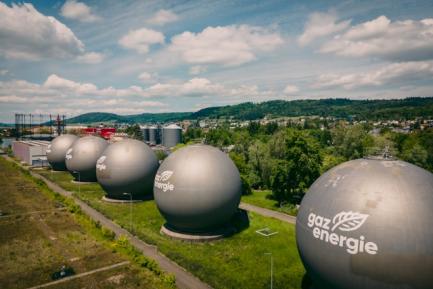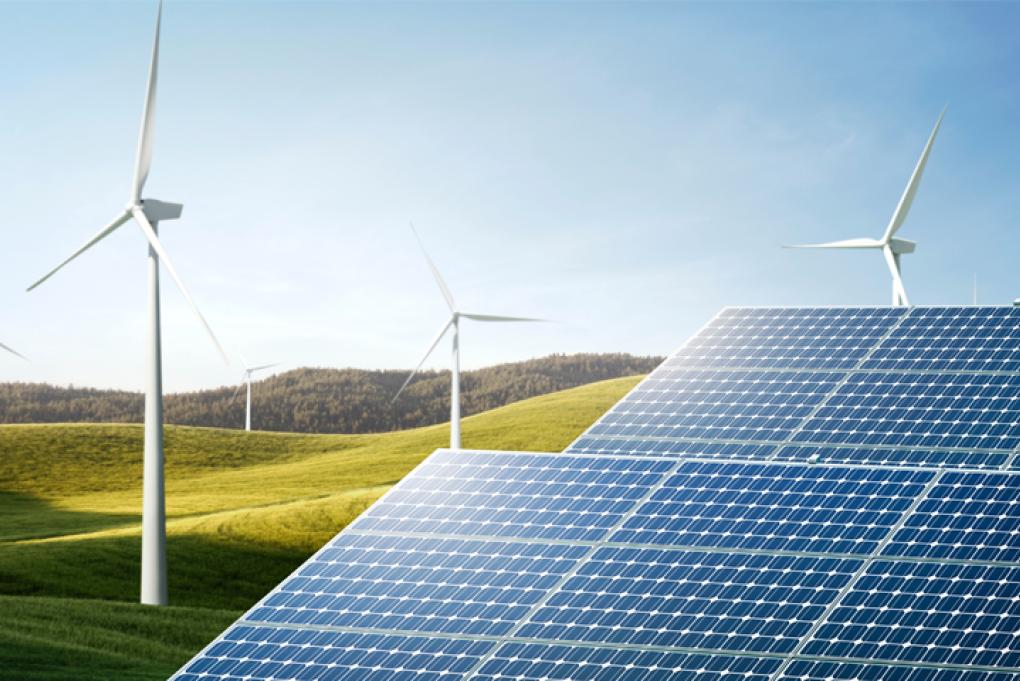The outlook for the price of oil
No-one claims to have predicted, not even remotely, the spectacular 75% slump in oil prices between June 2014 and December 2015. Such an omission can be excused due to the totally exceptional nature of the convergence of different forces occurring over such a short period of time but this variable has almost always had the rebellious habit of frustrating the predictions of experts. Given such a precedent we need to proceed carefully with any forecasts and merely provide a few pointers. With the storm still raging, our assessment indicates, and quite confidently, a medium-term situation (around five years) of the price being clearly above its present level. The path until then is far from certain but we are more than likely to see the first few signs of this recovery before the end of 2016. With regard to the long term, there seems to be no reason to think that the average price in real terms would be very different from the one seen over the last four decades.
The scenario of a significant rise in the price of crude in the medium term is supported by both supply and demand factors, whose interaction should follow a similar pattern to the one given by past experience described in the previous article in this Dossier. On the side of demand, the economic development of the emerging countries, with China at their head, will be a key determining factor. Here both cyclical and structural dimensions come into play. Regarding the former, we believe that most emerging economies will regain their dynamism after several years of adversity, albeit not without a few stumbles. Problems have appeared due to a combination of certain internal imbalances (current account deficit, inflation, etc.), disturbances resulting from the ups and downs of flows of international capital (in turn caused by the monetary policy adopted by the Federal Reserve and other central banks of developed countries) and the transformation and slowdown of the Chinese economy (which is moderating its consumption of commodities). The first part of 2016 might represent the valley in this cycle and, in spite of the pessimism predominant at present, the recovery should not take too long to materialise. One essential requirement is the stabilisation of the Chinese economy in the sense of achieving its desired and healthy change in model without a hard landing. If, as we expect, this will be the case, then conditions will be right for structural forces to take off, in China itself and also in other important emerging countries, leading to a notable rise in the demand for crude oil.
In fact, beyond the inevitable cycles, it is evident that, since the Asian crisis ended in the second half of the 1990s, both industrial development and social progress (expansion of the middle classes) have consolidated in the emerging countries so that many are now close to or have already passed the thresholds where demand for transport starts to accelerate. Years ago oil certainly deserved its moniker of «black gold» as its price was truly prohibitive for some. But undeveloped countries now have an increasingly larger share of the world's GDP, both measured in purchasing power parity and also in current dollars. Such progress involves a very significant increase in fleets of industrial vehicles and especially many households reaching a level of income that allows them to buy an automobile. For example, in 2015 sales of private vehicles in China reached 15 million (close to the 17 million in the United States). Given that only 25% of Chinese households currently own a vehicle (compared with 95% in the US), there is still a long way to go in this country. And in the near future China will be followed by other countries such as India, Indonesia, Pakistan, Bangladesh, Brazil and Turkey, adding a further 2 billion inhabitants.
In developed economies the main reason for expecting a certain rise in the demand for crude oil in the medium term is different in nature: the current situation of cheap oil tends to encourage and consolidate consumption habits biased towards petrol, as well as discouraging investment (private and public) in energy efficiency and in developing alternative sources (for example in the area of electric cars). This factor may not be very important in terms of size, however, as the price of petrol has dropped much less than that of crude oil due to the fixed taxes levied on fuel. Where the currently low crude oil prices can be seen to have a clear influence in the medium term is on the side of supply. And the effect is downwards. 2015's figures show that there is already a sharp decline in upstream investment (exploration and production) by international oil companies. And we can also expect a drop in the financial and technical resources devoted to research and development programmes, the ultimate source of improved productivity for oil extraction. This situation will reduce extraction capacity in the coming years. In fact, there are reasons to think this phenomenon will be more intense than in the past. One reason is that the decline (for geological reasons, in the daily number of barrels extracted from a well unless additional investment is made to deepen the well or pump more strongly) is currently of a rate (or speed) that is higher than in the past. This is the case for conventional fields (because they have already lost a lot of pressure) but especially for shale oil deposits (many of which actually tend to lose half their daily production every year). A second reason also has a particularly serious effect on the shale oil segment: the drop in the price of crude has been so sharp and unexpected that many companies are now in serious financial difficulty. For them, cutting investment does not seem to be such a bad move if it ensures their survival. But many, drowning in debt, are going under, with the consequent effect on physical, human and technological capital in the sector as a whole. These problems can also be seen in some oil-producing countries suffering from serious macroeconomic imbalances (in public deficit and current account), with pressing social needs and growing risks of political instability. Among the most worrying cases are those of Russia, Venezuela, Nigeria and Angola. Subjected to a similar situation, their respective governments are tempted to cut back on investment in oil extraction capacity and even in maintaining facilities, which will limit supply within a short period of time. In fact, with the aggravating factor of the short-sightedness typical of these countries, they are exhausting their production potential very quickly, which is helping to push the price down even further. At the same time they are also trying to achieve some respite by pressurising Saudi Arabia and Iran to sacrifice some of their production. This leads us to the third significant determining factor in the medium term: the competition between producers.
The drop in crude prices, which had started in 2011 and had been happening very gradually, speeded up in the summer of 2014 and the key factor behind this acceleration was the change in Saudi Arabia's attitude. Thanks to its huge reserves and incredibly low extraction costs, the country is a swing producer and can therefore absorb any temporary shocks occurring in the crude oil market better than anyone else. This is what it did in 2012-2013 when significant amounts of shale oil started to flood the market, and also during the first setback for the emerging economies (after the Federal Reserve announced the end of QE). In the summer of 2014 the Saudi Arabians changed their tactic of keeping the price around 100 dollars to one of defending their own share of global production. It is very likely that this decision was taken after reaching the conclusion that the shale revolution is not temporary or marginal and that China's slowdown and the adjustment phase in other emerging countries are going to last longer than just a few months. With this change, Saudi Arabia achieves two goals. Firstly, it slows down a competitor such as US shale whose extraction costs are high and now exceed the price of its oil. Secondly, it complicates Iran's plans to increase its production given the recently confirmed expectation that international sanctions would be lifted, which had been preventing the country from selling freely in the market. Iran has the potential (also due to its privileged volumes of reserves and production costs) to challenge Saudi Arabia to the leadership of OPEC. And, in addition to economic considerations, we should also remember that Sunni Saudi Arabia has a growing political and religious rivalry with Shiite Iran. Saudi Arabia looks on track to achieving its goals but this is still not certain, so its aggressive strategy could continue for some time yet (it has a good buffer of foreign reserves and low public debt). However, logic suggests that, as high-cost producers such as shale are increasingly pushed out of the market, and also as the recovery materialises in the emerging countries, Saudi Arabia will probably make a move to facilitate and take advantage of a context of higher prices than at present.
In summary, growth in demand from emerging countries, the current decline in investment in capacity and a moderation in the rivalry between producers are the three reasons why we expect the price of crude oil to rise in the medium term. Our forecast is 70-75 dollars by 2020, a considerable increase which would entail a return clearly above the historical average in real terms. This kind of over-reaction has already occurred in the past in similar situations to the present; in fact reaching prices above 100 dollars which, on this occasion, does not seem likely (huge surprises would be required in the aforementioned factors, in particular in the expansion of the number of vehicles in the emerging countries).
However, the path that might be followed by the price of oil up to this benchmark is difficult to predict. It is most likely that this will be a gradual rise as from the second half of the year; firstly due to the revival in the world economy, which is currently in a phase of deceleration that also affects developed countries. We will start to feel the effects of under-investment and the expulsion of shale in 2017 and these will become powerful as from 2018, acting as a further boost to the price. But the Saudi Arabia-Iran rivalry and, around it, the decisions made by OPEC and other major producers such as Russia, represent the huge doubt that looks like generating a great deal of volatility, and at any time, before oil prices finally get back on track.
In fact, the Saudi strategy (and that of other countries within its orbit, such as Kuwait and Qatar) could also be influenced by a long-term factor whose relevance is nevertheless increasing: namely the implications of the risk of climate change for the international energy industry. As has been discussed in the previous article in this Dossier, we cannot rule out the possibility of a large part of the proved reserves of fossil fuels (oil, natural gas and coal) remaining forever underground if, as expected, governments and private agents join the objective of putting an absolute limit to CO2 emissions released into the atmosphere. The establishment of taxes and restrictions on carbon, as well as encouraging public and private research programmes into alternative sources and energy efficiency, could bring this about. Certainly a challenge of this size would require a long time but Saudi Arabia is aware that its crude reserves can last for over 60 years at its current production volume and that, at a global level, this figure is almost 50 years (see graphs two and three). According to the map of scenarios (economic, political, technological, etc.) considered, there is the possibility that, in order to maximise the present value of all its future sales, Saudi Arabia might decide not to sacrifice its market share and tolerate, or even encourage, a price that eliminates or weakens its rivals. In fact, from a very long-term view, competition also includes the rest of the energy sources such as coal (which releases a lot more CO2 but is much cheaper), natural gas (which emits less), nuclear, hydroelectric and renewable energy sources. Technological innovations will play a crucial role in this competition. In our opinion today's situation points to the long-term trend in oil prices being similar to that observed over the last four decades: fluctuations, probably as strong or stronger than in the past, around a stable price in real terms equivalent to about 55 current dollars. Should this be the case, it would prolong its behaviour as a finite resource that refuses to run out, thereby endorsing the famous quote by Sheikh Zaki Yamani, Saudi Arabia's Minister for Oil during the tumultuous 1970s and 1980s: «the Stone Age did not end for a lack of stone».
Macroeconomics Unit,
Strategic Planning and Research Department, CaixaBank





